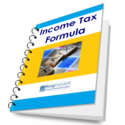What are bonds? What is “face value” and “coupon rate”? What is the relationship between the price of a bond and its “yield”? Let’s understand.
[This article has been inspired by a query from reader Sushant]
| What is a bond? A bond is a fixed income instrument. This means that you get a fixed, predetermined rate of interest on the investment that you make. |
Who issues bonds?
Bonds are issued by companies, and also by governments. Bonds issued by governments are, of course, considered safer than the bonds issued by corporates.
(Want to know about debentures? Check out “Understanding a Debenture“)
Who invests in bonds?
Mostly, it is institutional players like banks and mutual funds that invest in bonds. We as individuals too invest in bonds, usually issued by companies.
Bond basics
The bond issuer issues a bond, and it carries a certain rate of interest.
Each bond has a face value (or par value), which is the amount you pay to buy the bond when it is issued.
The rate of interest offered on the bond is called its coupon rate, or simply, coupon. This coupon is calculated as a percentage of the face value of the bond.
(Trivia: During old times, the bonds were issues as physical certificates. For each interest payment, there used to be a coupon attached with the bond certificate. Each year / quarter, investors had to detach an interest coupon and send it to the company to get the interest. That is why the rate of interest on a bond is called its “coupon”.)
The duration or time for which a bond is issued is called its Tenor (or Tenure in lay terms).
Thus, if a bond is issued for 10 years for Rs. 100, and pays interest of 7% per year, it has a face value of Rs. 100, carries a coupon of 7%, and has a tenor of 10 years.
When you invest in a bond, you receive the interest during the time you hold it, and at maturity, you get back your principal amount – the face value of the bond.
(Some bonds operate differently, for example, a deep discount bond. Please read “Understanding Deep Discount Bonds” for more).
Market trading
Bonds are also traded in the market. This means that if a bank did not buy it in the initial issue, it can still purchase it from the market at a later date.
The price at which a bond is bought and sold in the market is called the bond’s market price, or simply the bond price.
Bond Yield and its relation with bond price
As we saw, the rate of interest on the bond – the coupon – is fixed. However, the price of the bond in the market – its market price – can vary.
The rate of return from the bond at its market price is called the yield of the bond. This is the effective rate of interest that an investor would earn if he purchases the bond at that market price.
Let’s understand this using an example.
Example
A bond has a face value of Rs. 100 and carries a coupon of 7%. Its market price is Rs. 102.
This bond would give you Rs. 7 every year as interest (7% of the face value – Rs. 100 – every year)
In this case, the actual return to the buyer is Rs. 7 every year on an investment of Rs. 102.
Thus, the effective return for the investor, or,
Yield = (Rs. 7 / Rs. 102) * 100 = 6.86%
Similarly, if the market price of the bond is Rs. 98,
Yield = (Rs. 7 / Rs. 98) * 100 = 7.14%
Conclusion: There is an inverse relationship between the bond price and the bond yield – if price goes up, the yield goes down. And if the price goes down, the yield goes up.
Relationship between bond price, bond yield and the prevailing interest rates
When a bond is issued, it is usually issued at the prevailing rates of interest.
Thus, if the prevailing rate of interest in the market for 10 years is 7%, the bond would be issued at a coupon of around 7%.
However, the interest rates keep on fluctuating over time. Thus, the 7% interest rate can go up to 11%, or can go down to 5% depending on the economic conditions of the country.
What happens to the bond yields in this case? The yield of the bond moves in line with the prevailing rate of interest.
Let’s understand this using some examples.
Example 1 – Prevailing interest rate goes up
If the bond yield is 7%, and the prevailing interest rate goes up to say 9%, the investment in bonds would not be a good proposition. You can invest in other instruments and can earn 9%, right?
So, people would start selling the bond. But there would not be many buyers, as no one would want to earn less than the market rates. So, there would be more supply, and less demand.
What happens in this case? Of course, the price of the bond would fall. And what would happen to the yield? Due to the inverse relationship, the yield would go up!
Let’s say the price falls to Rs. 98. The yield would be 7.14%. Even this is much lower than the market rate of 9%, so people would continue to sell the bonds.
Till when will this go on? Till the time the yield reaches the market rates!
Thus, demand would emerge when the price of the bond reaches around Rs. 78. At Rs. 78,
Yield = (Rs. 7 / Rs. 78) * 100 = 8.97%
At this price, the yield is approaching the market rates. Thus, less people would be willing to sell, and the price would stabilize.
Example 2 – Prevailing interest rate goes down
If the bond yield is 7%, and the prevailing interest rate goes down to say 6%, the investment in bonds would be a very good proposition – after all, you would be earning more than the market rate, right?
So, people would want to buy the bond. But in this case there would not be many sellers. So, there would be less supply, and more demand. Thus, the price of the bond would rise. And the yield would go down!
Till when will the price rise? Again, till the time the yield reaches the market rates!
Thus, more people would be willing to sell when the price of the bond reaches around Rs. 116. At Rs. 116,
Yield = (Rs. 7 / Rs. 116) * 100 = 6.03%
At this price, the yield is approaching the market rates. Thus, more people would be willing to sell, and the price would stabilize.
Conclusions
- There is an inverse relationship between the bond price and the bond yield – if price goes up, the yield goes down. And if the price goes down, the yield goes up.
- The market price of the bond moves up and down, so that the yield of the bond remains in line with the prevailing rate of interest.
Other articles you might be interested in:
- Financing the purchase of your Tata Nano
- Understanding a Debenture
- Free cash withdrawals from all ATMs in India from 1 April 2009
- Saving tax on leave encashment amount – Section 89(1)
- Leave encashment / leave salary – Is it taxable?
- Highlights of the New Pension System / Scheme (NPS) for non-government employees
- Perquisite (perk) value of a company provided house
- How much should you invest to save income tax?
- Calculating your income tax liability – first step to saving tax
- Reached Section 80C limit? You can still save more income tax!
- Deduction of expenses on medical treatment – Section 80DDB
- Are you disabled? Save income tax under section 80U





